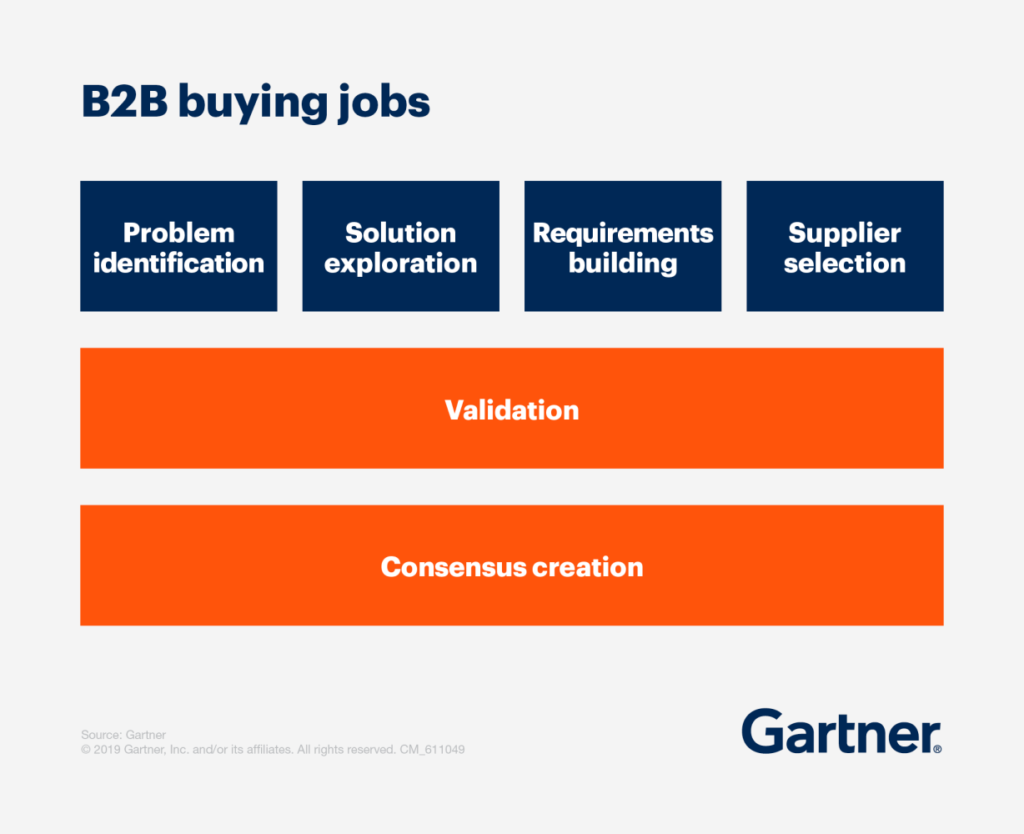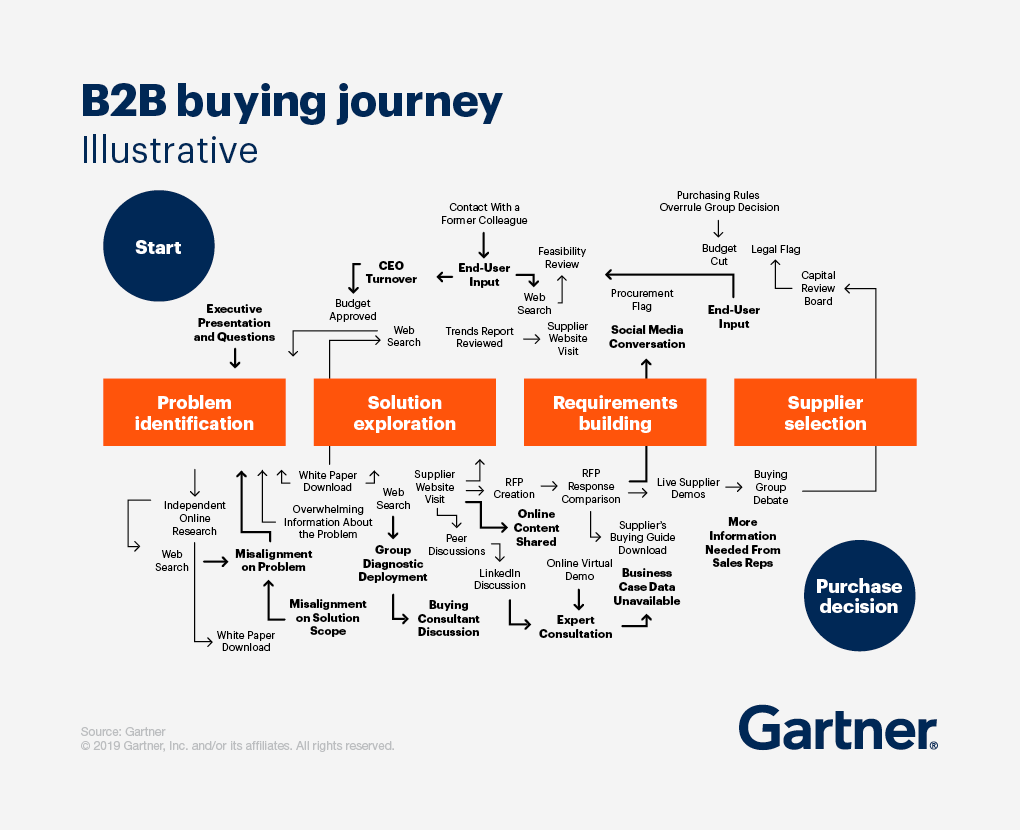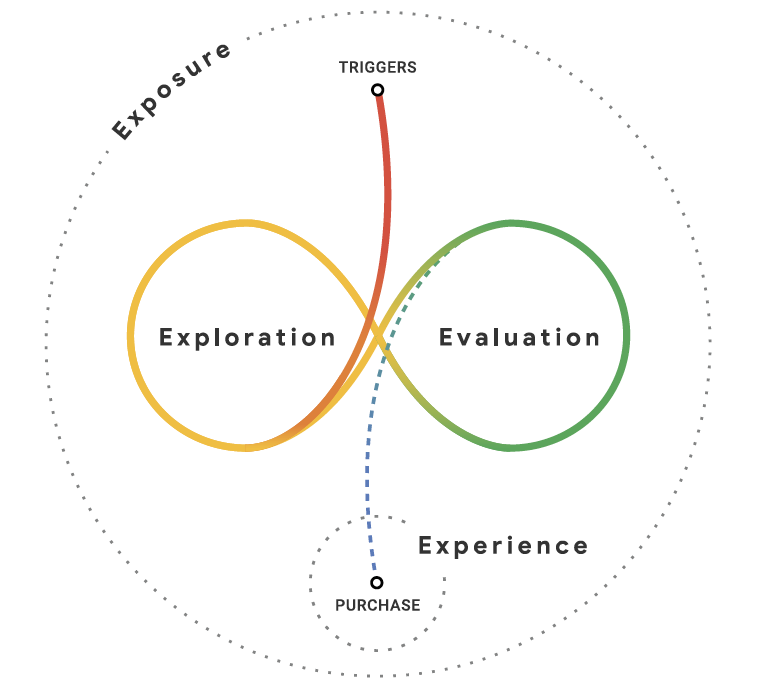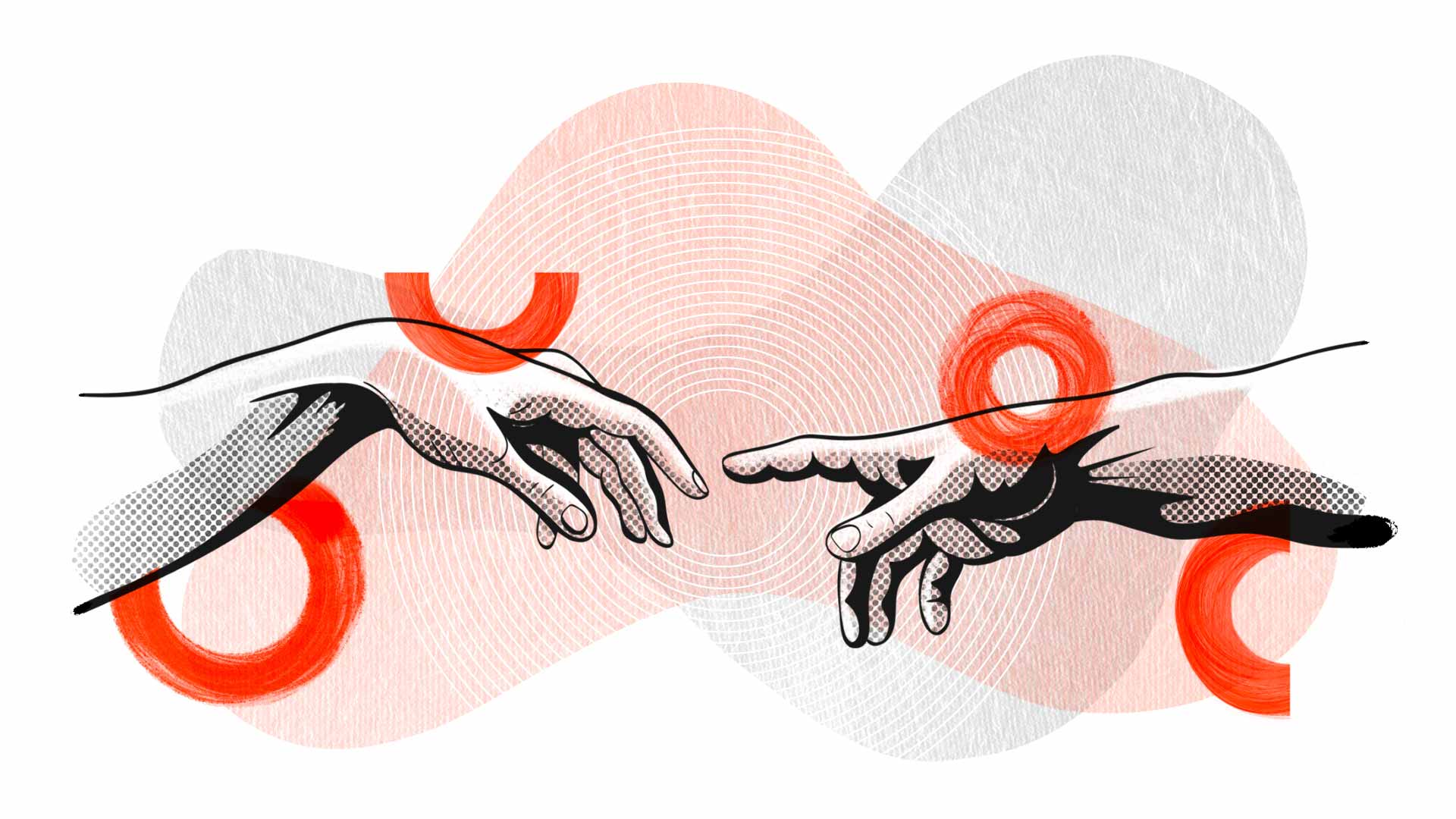B2B Customer Acquisition.
Almost by definition, specialist businesses have niche audiences. What has been lacking is the means to identity and address them more granularly. It doesn’t mean you don’t know your customers at all either – rather, it simply represents just how digital marketing has enabled the exciting opportunity to both understand them better to then tailor your messages and offers more effectively, targeting groups that may have been under-represented, hard to engage with or hidden all together. In effect, we’re now able to fill in customer insight gaps.
The digital marketing community Clickz, identified the five biggest problems with B2B content:
- It is more about you than your audience
- You don’t have a strategy
- It fails to align with the B2B buying cycle
- It is not managed throughout its entire lifecycle
- It doesn’t have a champion
One year on and the list provides a useful metaphor for the much broader marketing and customer acquisition challenges faced by B2B Tech businesses in reaching and engaging with niche, specialist audiences – reflected in the anecdotal evidence of our clients.
Value, relevancy, consistency
A more granular understanding of your audiences will give you the opportunity to interrogate and develop your brand and value proposition in detail and to refine your customer acquisition strategy. This in turn will allow you to create more focused messaging which better represents the breadth, depth and expertise of your offer, and which is carefully crafted to talk to all parties of this diverse community. The aim is to be able to communicate across numerous channels and customer touch-points to meet buyers’ needs as we’ll explore.
As our collective experience of online and digital marketing matures, it is now possible to reappraise the familiar B2B sales funnel models first devised in the 1920s and acknowledge a more involved buying cycle that reflects the complexity and needs of B2B buyer enablement and most importantly, how you can meet those specific needs – making you impossible to ignore.
Recent research has shown that buyers and prospects continually circle back and forth online, discovering new options and expanding their knowledge and consideration set. They might narrow down their choice before purchasing, or loop back completely. They can also cut to the purchase abruptly at any point.
Therefore, does your content really meet your buyers’ requirements and is it fully accessible at all the times – and at all touch-points – within the lifecycle of their buying journey?
We’ll come back to the specific role of B2B Content as we run through the list, but first, we should examine the key elements required to achieve successful, tangible performance for your lead pipeline and B2B customer acquisition.
Audiences
My audience is niche, and I need to understand it better
B2B Tech can be reluctant to address niche groups and smaller audiences – despite finally having the technology at our disposal to reach them.
It’s easy to see why. Budgets are tight and teams generally small in the sector, so a ‘needs of the many outweigh the needs of the few’ approach can feel safer. The worry is that by targeting smaller, specialist groups, businesses can fail to connect with everyone else.
As a result, there’s a temptation to focus on general brand messages that ‘speak to all’ whereas in practice, these can be highly homogenised and diluted. It’s also true that in the case of start-ups large and small, the audience to date has probably been investors in the main, requiring a relatively simple, ‘corporate’ brand presence online as the businesses get off the ground.
With the pressure on to show growth and deliver a return on investment, it’s tempting to pursue a ‘one-size-fits-all’ customer acquisition approach too for speed and ease, but this is to ignore the reality of how B2B products and services are now procured.
As we’ll explore, in the B2B Buying Cycle, teams of buyers fulfil specific, largely research-driven and information gathering roles, typically undertaken by 6-10 people within an organisation. This has profound implications for how we reach and engage with them – beyond the realms of mere brand or product awareness – having to reappraise what we define as ‘difficult to reach audiences’.
Let’s be clear: all these buyers, with their differing jobs, seniorities and tasks are the audience. As marketers in the broadest sense, our role is now one of facilitator – identifying and meeting as many of their needs as we can as they all move through their buying cycle.
But let’s also be honest, it’s tough to do. So, start small, identify a target buyer group and talk to them – or the next best thing, your sales team.
Most importantly, listen. Really listen.
Strategy
Winner of the lifetime award for the most over-used word in Marketing, ‘strategy’ can be surprisingly unhelpful at times for B2B. It puts too much emphasis on ‘having a plan’ for inbound campaigns towards customer acquisition, without necessarily first understanding what your audience need to meet their real motivations as we’ve just discussed.
Working within a B2B firm every day, implicitly brings familiarity with the products and services. But can the same be said for a detailed understanding of the brand and value proposition designed to engage all the new audiences you’re now able to target?
With significant pressure to create an active lead pipeline that performs, spending time considering your brand positioning can feel self-indulgent to some and frustrating to many. But avoiding these key steps in the interest of speed and quick wins is to set up the business to fail in its quest to attain ‘more logos’ as it’s often referred.
If you don’t believe there is a need to stress-test your value proposition for broader, niche audiences, take a straw poll of colleagues within your business and ask them to articulate your brand story.
Ask them to describe your brand: ‘Why are you here?’.
And then: ‘Why are you really here?’
Also ask them to consider: ‘What is the value your clients not only buy – but feel?
Interrogating and refining your brand and value propositions is about finding the best way to tell your story, to truly articulate what your business is for and what impact it strives to achieve. This will positively inspire your team to feel more confident and equipped to enunciate your businesses value to all your customers and prospects.
B2B Buying Cycle
I know my audience and it doesn’t respond to the usual channels
It’s important to get to grips with how the overall B2B buying journey has manifestly changed in recent years, driven by social change and our familiarity with all things online for the most part. This can be summarised most easily by exploring two key pieces of research from consultants Gartner in 2019 and most recently, Google in 2020.
Bottom-line, we can no longer assume our audience is at a particular point in their exploration and evaluation. In fact, the very opposite is true. They could be anywhere and everywhere along their buying road.
Gartner undertook a comprehensive reappraisal of the B2B buyer journey published in 2019 and its assertion regarding ‘Buyer Enablement’ has become generally accepted – that is that the traditional B2B sales funnel has now become six distinct, online ‘buying jobs’ – typically undertaken by 6-10 people within an organisation as below:

Importantly, Gartner was emphatic in their findings – “the buying journey isn’t linear”.
B2B buying doesn’t play out in any kind of predictable, linear order. Instead, customers engage in what one might call “looping” across a typical B2B purchase, revisiting each of those six buying jobs at least once. Buying jobs don’t happen sequentially, but more or less simultaneously.
The number of loops and changes in direction between ‘jobs’ according to Gartner’s B2B buying journey looks – well – messy.

Recent findings from Google add complexity to this tangled journey. ‘Think from Google’ introduced a concept in 2020 its authors term the “messy middle” –
…a space of abundant information and unlimited choice that online consumers have learned to manage using a range of cognitive shortcuts.
“A winding, scrawled squiggle”
Google sets out to understand, how consumers decide what they want to buy, and who they want to buy it from.
We’re all very familiar with the messy middle online. We know first-hand that there are no typical customer journeys – just a bewildering confusion of touch-points. Certainly not a neat, linear route from our first deliberation to purchase as traditional marketing models suggest, with definitive stages of the journey placed in neat boxes.

As Google acknowledges, it didn’t set out to create a new marketing model, but found they needed to make sense of the messy middle – the hitherto unfathomable consumer online journey to purchase.
The messy middle is also emphatically non-linear.
Consumers continually circle back and forth, discovering new options and expanding their knowledge and consideration set. They might narrow down their choice before purchasing, or loop back completely.
Consumers can also cut to the purchase abruptly at any point on the exploration/evaluation loop – sometimes sooner, sometimes later.
The Gartner/Google B2B Mash-up
This shared concept of ‘looping’ both for B2B and B2C online journeys is reflected in the well-documented blurring of marketing approaches whether it’s to attract individual consumers or businesses.
Once hailed as a generational shift in attitude and the domain of ‘digital natives’, it now seems that we’re all just more familiar with the online experience across society and it’s only the context in which we’re searching that alters – not the way we actually search.
Overall, this has major implications and opportunities for B2B customer acquisition across the entire prospect buyer lifecycle as we will now explore.
Managed Across the Lifecycle
Gartner was clear –
B2B buying is far less about progressing through a funnel and far more about completing a diverse set of tasks”, reasserting its findings several times including – “there is no way of knowing through a linear, supplier-centric sales funnel where exactly customers are truly struggling to make progress in any given deal
Showing up at key moments.
When it comes to the inner reaches of the online buying process, it’s time to relinquish all our illusions of control and understanding. Instead, we should focus on embedding our presence and amplifying our voice on a wider, more holistic level.
Whether buyers are just starting out on their deliberations, ready to purchase, or perfectly happy to keep riding roller-coaster on the exploration loop ad infinitum, we can no longer predict where they will discover us and by extension, in what order they’ll find information about brands, products and services as they seek to complete their buying tasks.
But, if we’ve really understood the motivations and needs of an audience group and not the linear journey we thought they were on, we’ll have what we – and more importantly they – need.
The better brands become at anticipating customers’ and buyers’ needs for information, guidance and supporting content, the better customer experience will become overall – for which Google set-out three clear steps to achieve this:
- Use available data to qualify and categorise [buyers] who are exploring.
- Provide a great user experience that makes exploring your offerings as easy as possible.
- Present all the relevant information potential customers need to make a rapid transition into evaluation and then on towards purchase.
Excitingly, the research also showed that just by being present (and relevant) right from the start of a deliberation process, brands can put themselves in the frame regardless of their size or profile. This might well sound the alarm bell for established brands, but also provides an incredible opportunity for new, challenger brands to get themselves noticed.
Champion
We’re on familiar ground if we consider the need for senior leadership backing for content, acquisition and inbound marketing programmes – but one small positive outcome of the COVID-19 pandemic and all those endless Zoom or Teams video calls, is that access to senior leadership is now much more common, quicker and more efficient – and this should be capitalised on. The practical barriers of travel, availability and let’s be frank, ‘importance’ have been removed for the most part, enabling all strata within a business to meet and discuss audiences, brand and value propositions – positively and effectively.
‘New ways of working’ dominate online business forums currently and this new-found ready-access to senior leaders and decision-makers should be ring-fenced and protected like the precious commodity it really is.
So, what at the end of the day, is the big deal?
Here’s the exciting thing.
We can now think positively about B2B customer acquisition, embracing the social changes and digital developments that enable us to actively seek-out and engage with previously difficult-to-reach audiences. We can stop worrying about unfathomable online journeys and simply concentrate on meeting the needs of our audiences all of the time.
Greater granularity of your audiences affords the opportunity to interrogate and develop your brand and value proposition in detail, so that is better suited to represent your breadth, depth and expertise. You are now able to promote to niche audiences.
Tim Sennitt, OTM 2021.
If you would like to find out more about engaging with difficult to reach B2B audiences, we’d love to hear from you. jenniegerry@otmcreate.com
Acknowledgements
Article: Five problems with B2B content (and how to fix them), ClickZ, July 27, 2020
New B2B Buying Journey & its Implication for Sales, Gartner, Inc.
Article: How people decide what to buy lies in the ‘messy middle’ of the purchase journey. Alistair Rennie, Jonny Protheroe, Think with Google, July 2020.
Report: Decoding Decisions – Making sense of the ‘messy middle’. Alistair Rennie, Jonny Protheroe, Claire Charron, Gerald Breatnach, Think with Google, July 2020.

